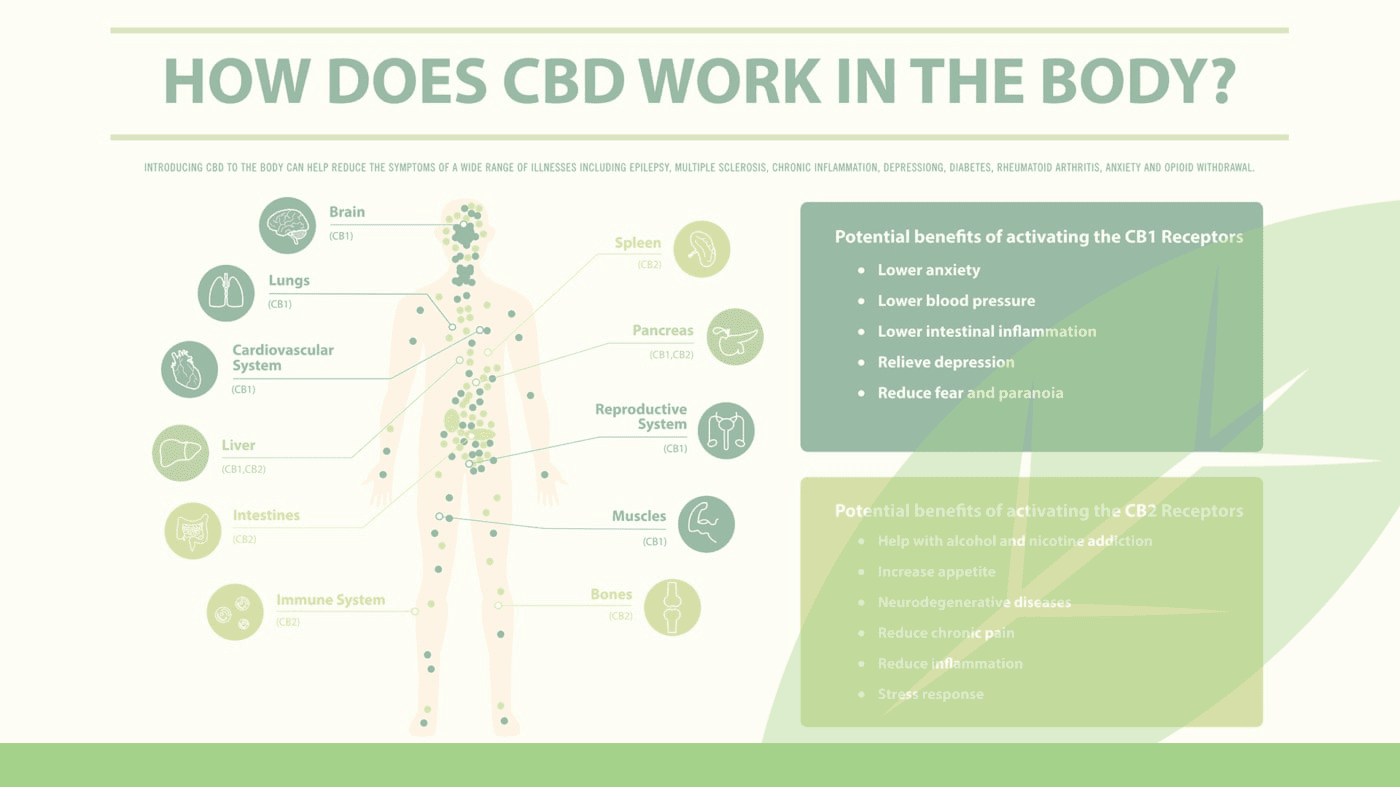Your Cart is Empty
ALL ORDERS WILL BE INVOICES THROUGH SQUARE - USE CODE SQUARE FOR 30% OFF YOUR ORDER TODAY!
ALL ORDERS WILL BE INVOICES THROUGH SQUARE - USE CODE SQUARE FOR 30% OFF YOUR ORDER TODAY!
ALL ORDERS WILL BE INVOICES THROUGH SQUARE - USE CODE SQUARE FOR 30% OFF YOUR ORDER TODAY!

November 30, 2022 4 min read
Researchers Allyn Howlett and William Devane were the first to discover that the mammalian brain has something known as a cannabinoid receptor. The discovery was made at St. Louis University School of Medicine in 1988. Two years later, a team led by molecular biologist Lisa Matsuda, announced that they had mapped the DNA sequence that encodes a cannabinoid receptor in the brain. These scientific advancements propelled the learning and understanding of the endocannabinoid system, a body system that is literally made to receive compounds like CBD. Scientists would soon learn that cannabinoid receptors are the most abundant type of neurotransmitter receptor in the brain.
While it isn’t widely talked about, there is plenty of research and evidence to prove the existence and importance of this system. Many of the exact mechanisms and processes of the endocannabinoid system are still unknown, but scientists know that it has a major impact on important areas of our life such as sleep, appetite, mood, and memory. The endocannabinoid system can impact virtually every area of our life.
The endocannabinoid system is a unique system unlike any other. It is composed of these receptors that work with cannabinoids like CBD in order to promote balance, wellness, and homeostasis. These receptors are found in the brain, nervous system, vital organs, connective tissues, the skin, the digestive tract, and other locations throughout the body.

UCLA Health says, “It appears the main function of the endocannabinoid system is to maintain bodily homeostasis—biological harmony in response to changes in the environment”, while this study calls cannabinoids a “bridge between body and mind.” Learning about the endocannabinoid system, the receptors in it, and the compounds that work with it is imperative to understanding how CBD works with our bodies.
There are two different kinds of cannabinoids, endocannabinoids and phytocannabinoids. Both kinds of cannabinoids work with the endocannabinoid system. Endocannabinoids are naturally-occuring in the body. They are, interestingly enough, found in breastmilk, as well as endocannabinoid receptor sites and other areas of the body. The two major endocannabinoids are anandamide and 2-AG. Endocannabinoids are fat-like molecules and are synthesized on demand. This means they are produced when they are needed, as opposed to being produced and stored for later like a lot of other biological molecules.
Phytocannabinoids are located in plants, but most densely in the cannabis plant. CBD is one example of a phytocannabinoid, along with THC, CBG, CBN, and CBC, just to name a few of over 100 known cannabinoids. All cannabinoids have therapeutic potential. CBG, for example, has been highlighted recently for its ability to boost your energy. People also claim it helps them with their digestive disorders. CBN is known as the sleepy cannabinoid and encourages users to get a restful night’s sleep. Remember that these statements have not been evaluated by the FDA. This research is an important building block, but not the final say. We recommend always having a conversation with a CBD-educated physician that knows your medical history before introducing CBD into your routine.

Ideally, your CBD product contains a robust cannabinoid profile to allow the CBD to work better. Products like these are called broad spectrum or full spectrum, meaning they include more than just the single cannabidiol (CBD) particle. Understanding how CBD works with our bodies, we can determine that cannabinoids work better when they are together. This is called the entourage effect. Cannabis professor Raphael Mechoulam and Shimon-Ben Shabbat first made a case for the entourage effect or “whole plant synergy” in 1998. Dr. Ethan Russo, a pharmacologist and neurologist wrote a review titled “Taming THC: Potential Cannabis Synergy and Phytocannabinoid-Terpenoid Entourage Effects.” This review gives a detailed account of the benefits of major cannabis compounds and describes their potential synergistic effects based on their pharmacology.
Another important component of the endocannabinoid system are enzymes. The goal of an enzyme is to break down cannabinoids so that it may bind to the receptors. There are two kinds of enzymes that do this, fatty acid amide hydrolase which breaks down anandamide and monoacylglycerol acid lipase, which typically breaks down 2-AG.
When people talk about endocannabinoid receptors, they are usually referring to two different kinds: the CB1 and CB2 receptors. CB1 receptors are primarily located in places like the brain stem, the spine, and the nervous system, but they are located in other parts of the body as well. CB2 receptors are predominantly found within the body’s vital organs, immune cells, and the digestive tract. THC is said to fit the CB1 receptors like a key fits a lock. CBD mainly has a relationship with the CB2 receptors. Unlike the relationship between the CB1 receptors and THC, CBD does not fit the CB2 receptors like a key. They do interact though, and very heavily. This does not mean that CBD does not interact with CB1 receptors or that THC never meets a CB2 receptor. The cannabis plant and the endocannabinoid system have a very unique and blended relationship, the two work synergistically together in all areas.
How are others using CBD in their daily lives? What recent news stories and articles are coming out about CBD? Sign up for our introductory email series. Oh, and you’ll get sweet discount codes.